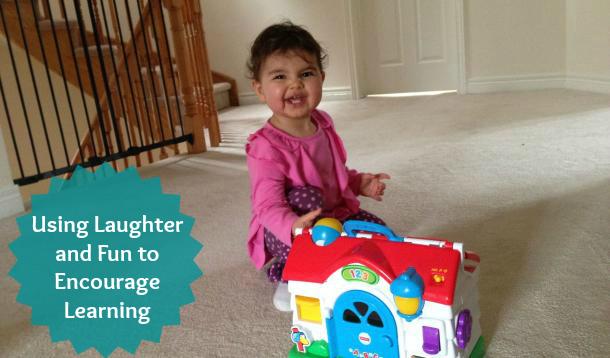
When it comes to education, a little laughter goes a long way.
Obviously, amusement doesn’t cause learning, but it sure has a positive impact on a child’s ability to retain information. Countless studies have demonstrated how kids learn through play. In fact, play-based learning is one of the main concepts driving the most recent kindergarten curriculum in Ontario. Experts in the field of education have come to understand something that parents and kids have known for a very long time—that play and fun lead to discovery and understanding.
Anyone who has spent any time teaching kids can tell you that students learn better when they are feeling good. Anxiety, sadness and boredom tend to monopolize a good portion of the mind’s time and energy, leaving little space for new information to find its way in.
However, happiness, engagement, and contentment leave the brain’s door wide open for fresh ideas to jump through.
A fun, relaxed atmosphere produces better results than an atmosphere that creates anxiety or boredom for the learners. And adding enjoyment into the lesson strengthens the bond between teacher and student. So, when I can link a lesson to a little fun, present information in the form of a game, or add some humour into my teaching, I do.
These days, I have the great pleasure of seeing everything I know about learning reflected in my daughter as she tries to master a new skill. At close to fifteen months, her brain is like a little sponge, soaking up every bit of information she can and practicing her skills over and over until she masters them. I’m beginning to think every teacher-training course should have a section on observing toddlers—there are few better examples of the great learning process.
And I see what I know about laughter and learning echoed in my daughter's play. When something strikes baby girl as funny, she grasps it right away and places it in her long-term memory. For example, some words we have had to repeat countless times before she attempts to say them, but amid the giggles, she grasped our word for flatulence right away. Her eyes shine with delight and she clearly enunciates “toot” every time there’s a rumble from her diapered end. I guess that means she inherited her sense of humour from her father.
Because we are a family that enjoys bonding over a good chuckle, when Fisher-Price sent us one of their new Laugh & Learn products, we could hardly wait to open it.
Even while it was still in the package, baby girl was intrigued by the colours and inviting design of Laugh & Learn Puppy’s Activity Home. Rookie mom mistake #426, I let her see the package before starting our bedtime routine. This meant that I could only lure her away from the singing toy with my own lively song and dance and promises of the world’s greatest bubble bath.

In the morning, my daughter spied the new toy and gleefully squealed with delight. Already an avid user of the Laugh & Learn apps, as well as a few other toys from this product line, my daughter was delighted to be reunited with her familiar friends, Puppy, Froggy, and Monkey. Together we enjoyed exploring the many features of the house.

Puppy’s Activity Home includes three learning modes, learning, music, and imagination. Music is definitely a key feature of enjoyment-based learning, and it is an excellent tool for transferring information into long-term memory. If you’ve ever sung along to a song that you haven’t heard in a decade, and were surprised as the lyrics fall out of your mouth, you’ve enjoyed this phenomenon at work.
And in addition to the learning science behind it all — music makes my girl do the wiggle dance, which just fosters joy all around.
For my curious, inventive little toddler, learning is all about discovery and play. Watching her is a great reminder to bring this attitude into my teaching. Students of any age can benefit from play-based discovery. It’s the reason your 13-year old can tell you everything there is to know about her favourite computer game, but probably can’t tell you what she learned in math class yesterday. It’s also the reason your high-schooler can remember the discovery he made during last year’s science lab better than any facts from today’s history lecture.
Fisher-Price has aimed their Laugh & Learn product line at toddlers aged 6–36 months, but the lesson reaches far beyond that range. Whatever the age of the students, we should all remember to add a little laughter and playfulness into all our learning.
After all, shouldn’t my students get to enjoy the journey too?
 Who said learning can’t be fun? Everyday play helps babies explore and discover the world around them and engaging toys can be a part of that experience.
Who said learning can’t be fun? Everyday play helps babies explore and discover the world around them and engaging toys can be a part of that experience.
It may look like child’s play but the Laugh & Learn™ Puppy’s Activity Home, Puppy’s Learning Car, and the Love To Play Puppy will help your baby learn through laughter.
To discover more about the power of play and to encourage your baby’s natural sense of wonder, visit Fisher-Price® Laugh and Learn™. You can also find Fisher-Price® Laugh & Learn™ toys at Walmart and Toys “R” Us.

This is proudly sponsored by our friends at Fisher-Price®.
www.fisher-price.ca
Check out these Fisher-Price® Laugh & Learn™ toys—toys for every stage of development.